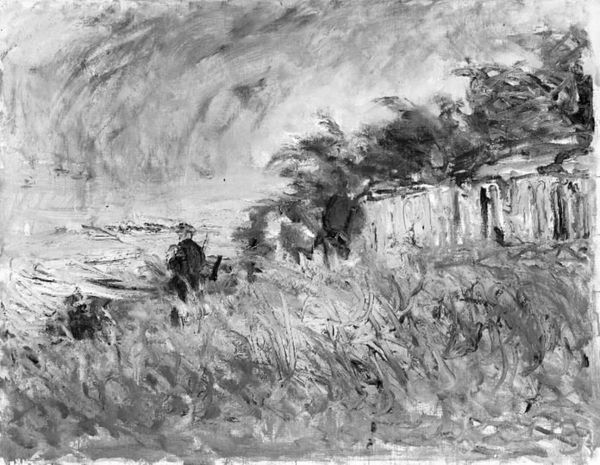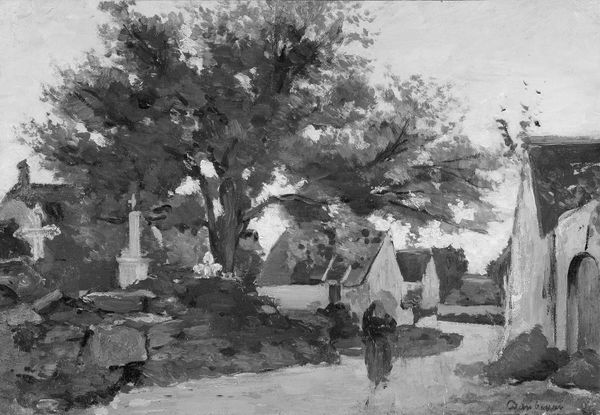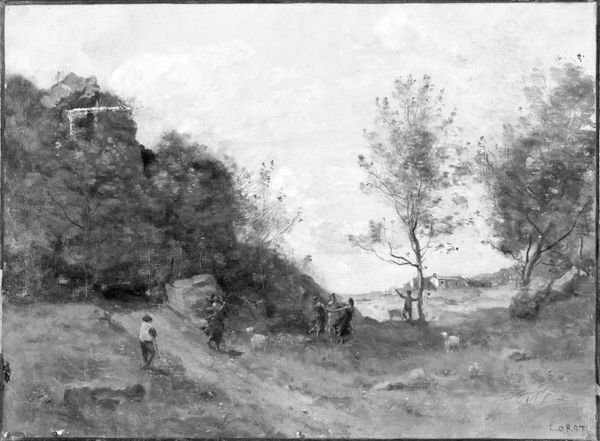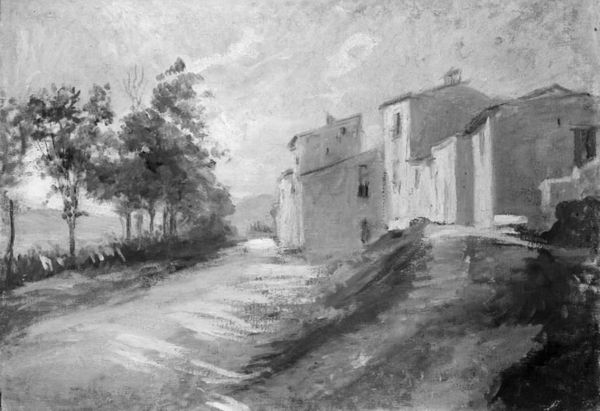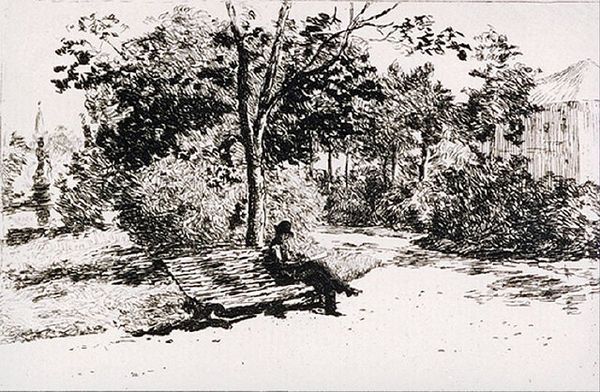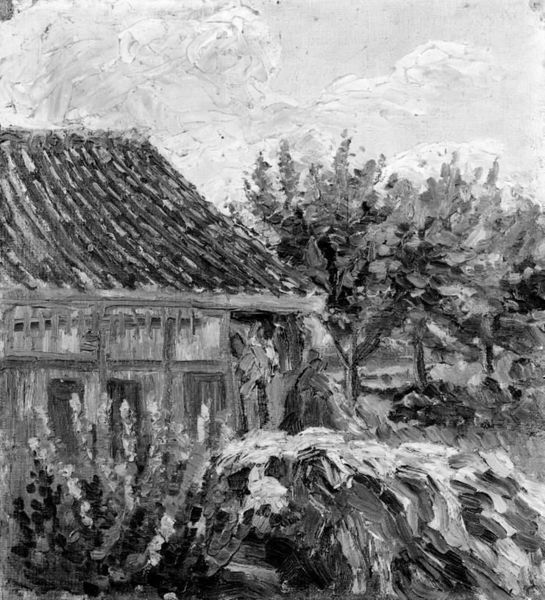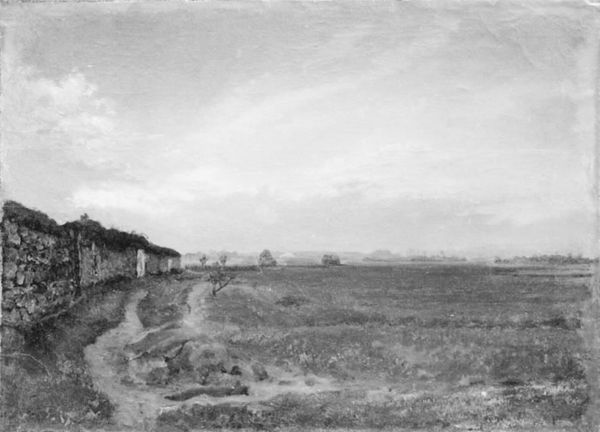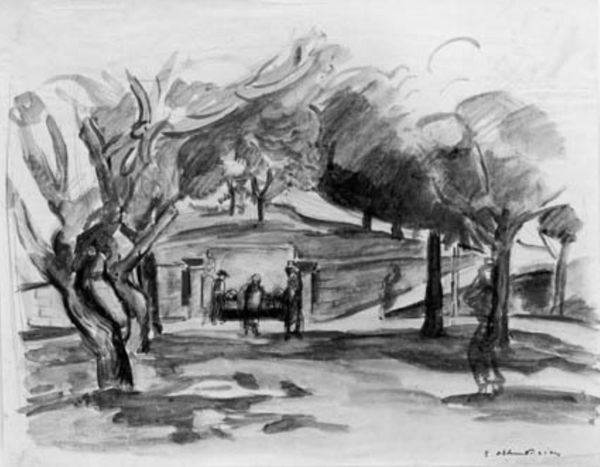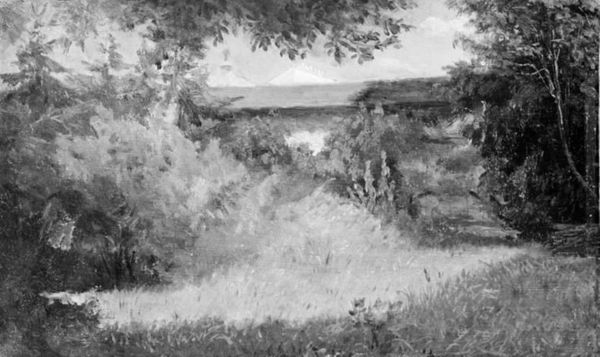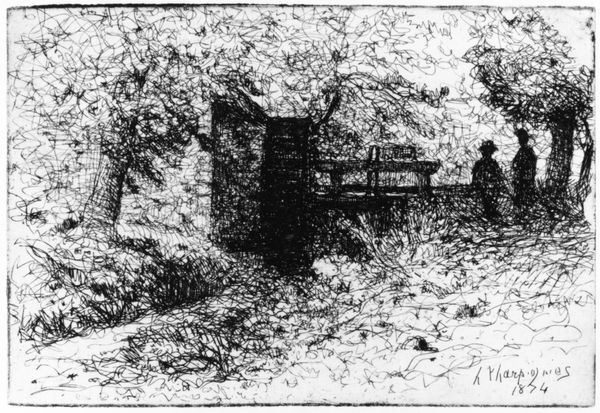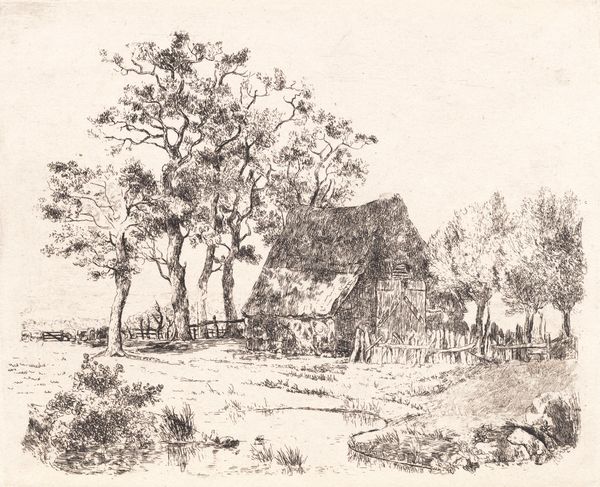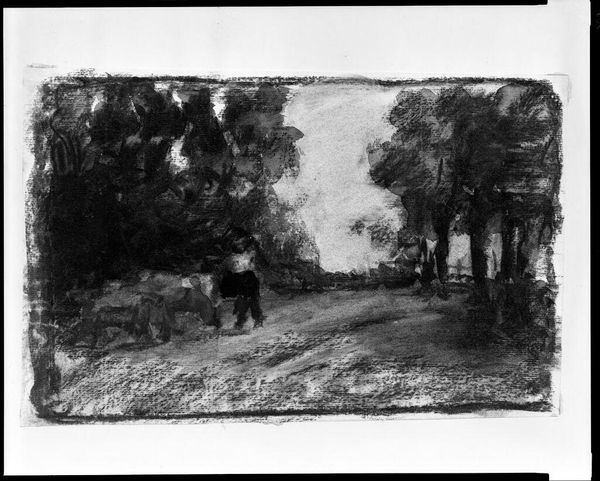
canvas
#
natural shape and form
#
black and white photography
#
countryside
#
black and white format
#
charcoal drawing
#
charcoal art
#
canvas
#
black and white
#
monochrome photography
#
charcoal
#
shadow overcast
Dimensions: 79 cm (height) x 103 cm (width) (Netto)
Editor: We're looking at Peter Rostrup Bøyesen's "The Pine Path at Gilleleje," created in 1941. It appears to be an oil painting on canvas, rendered in monochrome. It has this quiet, unassuming feeling, like a simple walk in the country, but the high contrast gives it an unsettling atmosphere. How would you interpret this work? Curator: The starkness certainly stands out. While seemingly depicting a pastoral scene, it’s essential to consider the historical context: 1941, during the Nazi occupation of Denmark. Do you think the artist's choice of stark black and white reflects something deeper than an aesthetic preference? Editor: Perhaps the lack of color symbolizes a loss of vibrancy, a somber reflection on the state of the country under occupation? Do you think this painting may have been intended as a kind of protest, even if a subtle one? Curator: That's an astute observation. I believe that seemingly simple landscapes can operate as powerful symbols during times of political unrest. Artists often used landscape to evoke feelings of national identity, resistance, and the importance of preserving cultural heritage under threat. Is there anything in the composition that gives you this idea? Editor: Well, the lone figure on the path. She appears small, even vulnerable. The thick foliage around her might represent both the beauty of the Danish landscape and a sense of being hemmed in, restricted by the occupation. Curator: Exactly! Furthermore, the work's exhibition history, if any, and its reception during that period are crucial. Who saw it, where was it shown, and how was it interpreted? Those questions shed further light on its socio-political dimensions. It makes you wonder if the work would have as powerful meaning had it been painted earlier, or later, doesn’t it? Editor: Definitely. Thinking about it as more than just a landscape really enriches my understanding. Thank you for pointing out that social context. Curator: It's crucial to consider those forces. Always question the seemingly straightforward image!
Comments
No comments
Be the first to comment and join the conversation on the ultimate creative platform.
